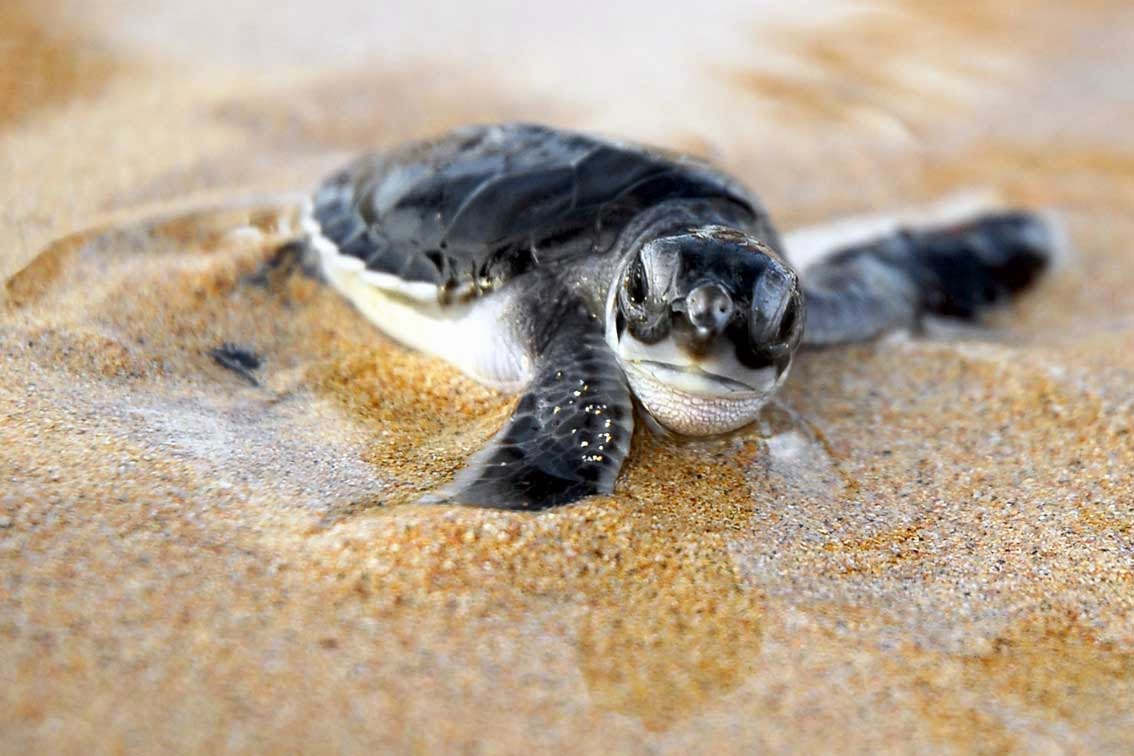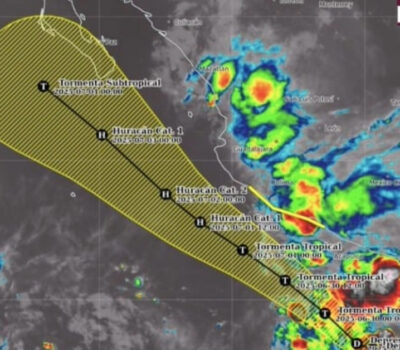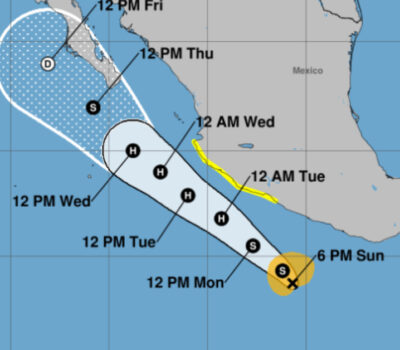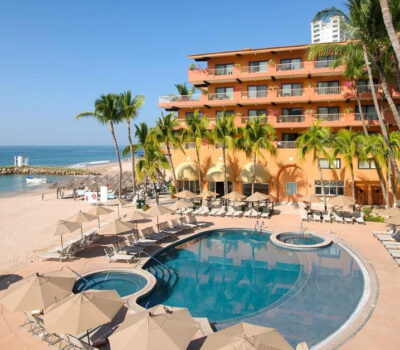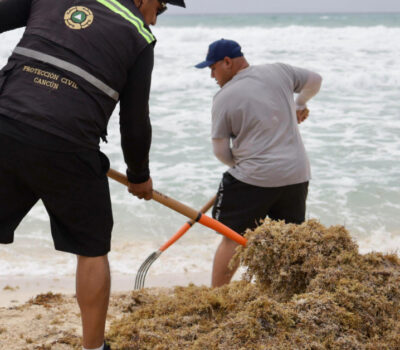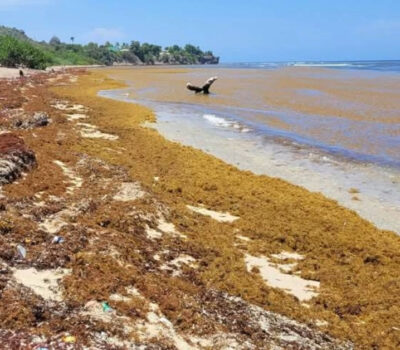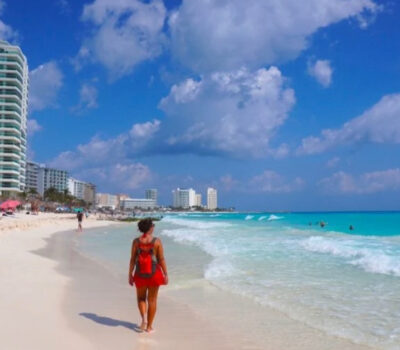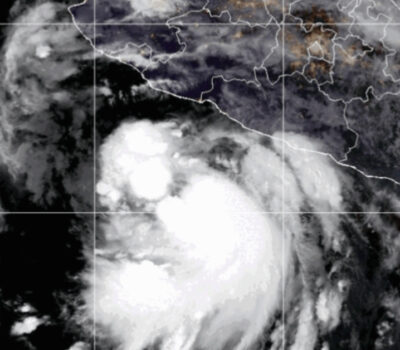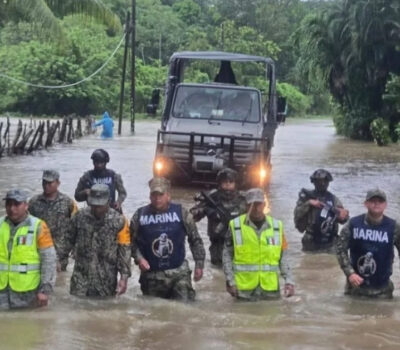Of the seven species of marine turtles that exist, the olive ridley turtle has recovered to the point that it has been removed from the list of critically endangered species, however, risks still remain, which is why sites such as the CasaMagna Marriot Camp in Puerto Vallarta is dedicated to its preservation.
This species is the smallest of the sea turtles, along with the Kemp’s ridley, it can reach 70 centimeters of curved length, and from 18 to 22 grams at birth, it reaches between 40 and 45 kilos when full-grown; Its reproductive stage begins at 15 years and it is estimated that only one of one thousand reach adulthood.
The camp located on the beach in front of the hotel in Marina Vallarta is ideal for tourists who want to see the sea turtle in the enclosed space and learn about sea turtle preservation in Puerto Vallarta.
“The nesting takes place at night, although it is not impossible, but rare, that turtles come out during the day, since the olive ridley turtle is very resistant and not as easily disturbed, unlike species such as the caretta or amarrilla,” said Vicente, whose love for these animals began in 1986 at age 18.
He explained that there are times when people are sitting on the beach, the turtle comes to lay the eggs, so, the recommendations for tourists are not to disturb it, do not take photos with flash, or do nothing out of the ordinary that could startle the turtle, just observe and let her nest, whose season lasted from June to February, when 20 years ago it was from July to December.
Although the longevity of olive ridleys is not fully proven, since they have only been in the sea turtle protection program for 40 years, it indicates that they probably have the capacity to live from 60 to 70 years, but many die by incidental or accidental fishing.
Other predators in their early stages are birds, fish or if they hatch in the day, birds or crabs eat them; also in wildlife some small mammals on beaches, which are common, like opossums or raccoons will feed on the eggs.
Although he acknowledged that man is considered a lesser predator, in some places the practice continues that the egg is of a “culinary delicacy” and despite its high protein content, contains harmful elements such as cholesterol.
At Casa Magna, we could not see any turtle during our visit, but while Vicente explained everything about these species, colleagues told him they were about to release a turtle at the Boca de Tomates camp, where we were able to witness the release.
Inside a tub at Boca de Tomates, 10 KM north of Puerto Vallarta in Marina Vallarta, was the olive ridley turtle, anxious to return to its habitat, while “Nan”, a volunteer from the United States, looked with affection and spoke softly to the turtle, indicating that she would soon return to the sea. Vicente said that foreigners usually spend their time in this camp because it is wonderful for them to be close to these species, even a Korean tourist, cancer survivor, cried when she saw them for the first time.
“They thought the turtle was going to lose mobility and that the fin was going to be amputated, but the turtle started to move it, deflated a bit, and a few days later a veterinarian gave the turtle a small puncture that bled which meant that the fin was recovering circulation,” they told the camp about the turtle that was injured and brought to the camp for rehabilitation.
In the camp, there is an artificial incubator where the eggs are placed in boxes marked with the nest number, the date, the number of eggs and the probable date of hatching and a space to write down when they are born, all in English so that any volunteer understands the data.
Back to Casa Magna, the person in charge of the operations said that in this camp, the hatching level is 88 percent, something very successful, since each nest can contain 100 eggs; in addition, it contributes that the sand is changed every year, which allows the egg to develop normally.
“They can eat very little and stop eating for months if needed. Their metabolism is so slow that they are living proof of everything that may be wrong in the ocean, because it stays in their blood, like heavy metals and toxins, materials that kill other species, but they are still alive, that’s why scientists are also very interested in the sea turtle,” he said.
In general, the preservation of these species is a success in the country, particularly in Puerto Vallarta, where there is an equipped nursery where more than 1,200 nests are incubated, to which predators cannot enter.
For 32 years, the practices at Marriott camp have allowed us to continue the work of preservation, as well as research, with the collaboration of institutions such as the National Polytechnic Institute and the State University of Sonora.
NTX
Of the seven species of marine turtles that exist, the olive ridley turtle has recovered to the point that it has been removed from the . . .

